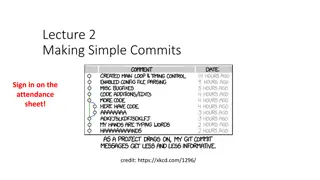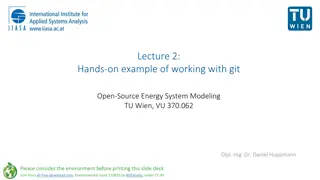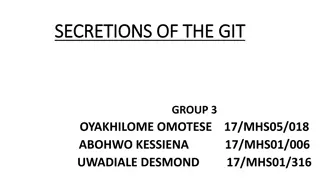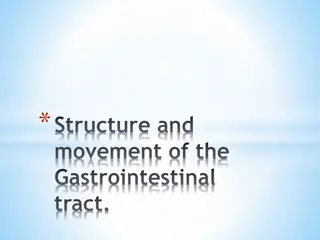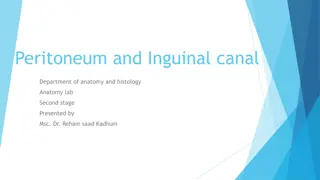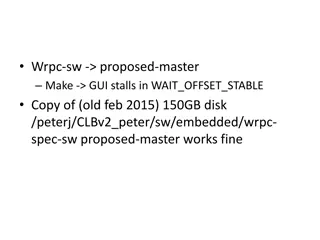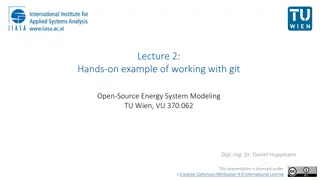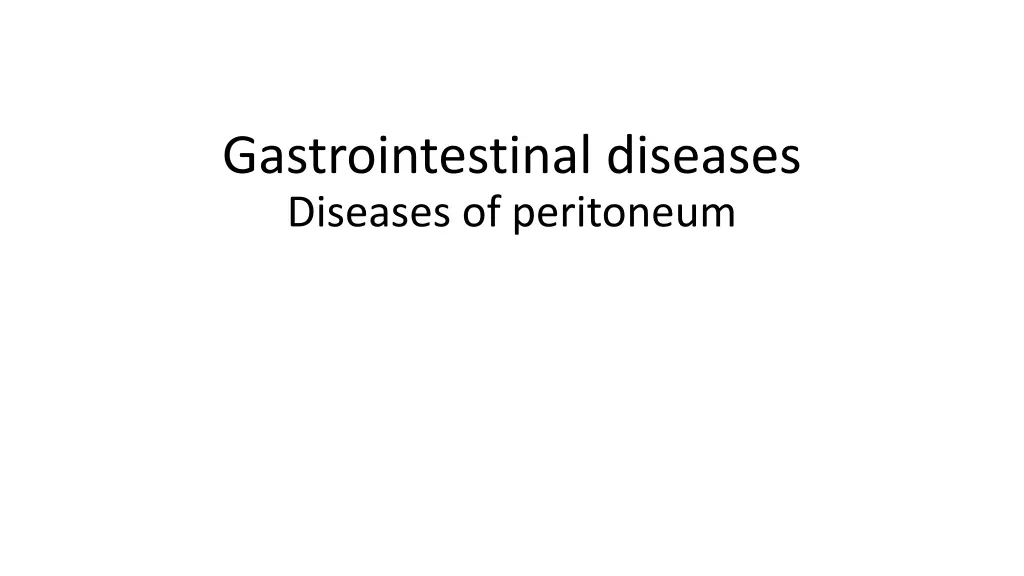
Understanding Gastrointestinal Disorders: Peritoneum, Intestinal Changes, and Complications
Explore gastrointestinal diseases affecting the peritoneum, changes in intestinal position and lumen, ileus, invagination, volvulus, and more. Learn about symptoms, causes, and complications related to these conditions.
Download Presentation

Please find below an Image/Link to download the presentation.
The content on the website is provided AS IS for your information and personal use only. It may not be sold, licensed, or shared on other websites without obtaining consent from the author. If you encounter any issues during the download, it is possible that the publisher has removed the file from their server.
You are allowed to download the files provided on this website for personal or commercial use, subject to the condition that they are used lawfully. All files are the property of their respective owners.
The content on the website is provided AS IS for your information and personal use only. It may not be sold, licensed, or shared on other websites without obtaining consent from the author.
E N D
Presentation Transcript
Gastrointestinal diseases Diseases of peritoneum
Plan Changes of intestine position Changes of intestine lumen Ileus Pathology of the peritoneum Hernias and prolapse Tumors and pseudotumors of peritoneum
Changes of intestine position Can be inherited (GIT malformations) Can be acquired (changes of normal borders of GIT and its complications)
Invagination is a condition in which a part of the intestine folds into the section ahead of it. It typically involves the small bowel and less commonly the large bowel. Symptoms include abdominal pain which may come and go, vomiting, abdominal bloating, and bloody stool. It often results in a small bowel obstruction. Other complications may include peritonitis or bowel perforation.
Volvulus a loop of intestine twists around itself and the mesentery that supports it, resulting in a bowel obstruction. Symptoms include abdominal pain, abdominal bloating, vomiting, constipation, and bloody stool. Onset of symptoms may be rapid or more gradual. The mesentery may become so tightly twisted that resulting in ischemic bowel.
Changes in intestine lumen Intestinal Obstruction small intestine is most often involved because of its relatively narrow lumen. Collectively, hernias, intestinal adhesions, intussusception, and volvulus account for 80% of mechanical obstructions, while tumors and infarction account for only about 10% to 15% of small bowel obstructions. The clinical manifestations of intestinal obstruction include abdominal pain and distention, vomiting, and constipation.
Ileus Condition when hilus passages is blocked in intestines. Can be mechanical and dynamic
Mechanical ileus Obturation ileus Obturation ileus Subjectively : Colic pains, not very strong, the intensity gradually increases. Vomiting, occurs later due to stagnation of bowel contents above the obstruction. The more distal the obstruction, the later it occurs. Objectively : Tactile soreness is mainly localized in the area of the obstacle. Audible effortful peristalsis . Peristaltic waves - visible on the abdominal wall.
Mechanical ileus Strangulation ileus Strangulation ileus Subjectively : Colic pains (very strong from the beginning). Vomiting (from the beginning). Flatulence (with stoppage of passing gases and stools). A mixture of blood and mucus in the stool . Objectively : Tactile soreness (does not disappear when the examining hand is moved away). Auscultatory disappearance of peristalsis . A drop in blood pressure, an increase in heart rate, pallor and even cyanosis of the face .
Dynamic ileus Paralytic ileus Paralytic ileus Subjectively : Weaker pains from bowel and abdominal wall distension, colic pains are not present. Gases and stools do not pass . Objectively : History: concurrent renal or biliary colic, post-operative conditions, intoxication, etc. The abdomen is evenly inflated. Aurally "dead silence" . The patient is in a relatively good condition (blood pressure, heart rate, body temperature normal).
Dynamic ileus Spastic ileus Spastic ileus is very rare, usually it cannot be distinguished from mechanical ileus (until intraoperatively). Objectively : Anamnesis : concurrent CNS diseases. General condition good (unlike mechanical ileus, which spastic ileus otherwise resembles).
Vascular ileus Subjectively : Sharp to shocking pain . From the beginning reflex vomiting . Loose stool with blood admixture appears . Objectively : History : heart or vascular diseases. Increase in heart rate, decrease in blood pressure (shock symptoms)
Pathology of ileus Disorder of intestinal passage leads to increase of intestinal lumen, surge of abdomen and dilatation of intestine (especially above the obstruction zone) In the lumen of intestines we would find liquid effusion and increased permeability of intestine wall With time we can observe plethora and serous inflammation. If ileus happened due to ischemia we would observe hemorrhagic infarction of intestine wall
Pathology of the peritoneum. Pathological effusions: Ascites is an accumulation of noninflammatory fluid in peritoneal cavity. The peritoneal cavity contains physiologically 150 ml of fluid produced by mesothelial cells, larger volume is considered as ascites. 10 liters of fluid is no exception. Can be one of the consequences of liver cirrhosis and portal hypertension.
Ascites Formation of ascites is a mutifactorial process. sodium and water retention - is renal dysfunction (higher reabsorption of Natrium in renal tubules), causes formation of swelling and ascites; hypoalbuminemia with reduced plasma oncotic pressure can be a reason for migration of fluid from plasma to extravasal space and peritoneal cavity; vasodilatation in splanchnic circulation - mediated by nitride oxide; portal hypertension - higher resistance in liver sinusoids supports migration of fluid to extravasal space in liver, their lymphatic veins can drain away only a part of this fluid; baroreceptor-mediated stimulation of renin-angiotensin system
Types of ascites Ascites chylosus Cholascos (bile) Hemoperitoneum Pneumoperitoneum Pseudomyxoma peritonei
Peritonitis is an inflammation of the peritoneum Can be: chemical through the action of chemical substances (bile, urine, pancreatic juice, gastric content, blood). If these fluids are sterile, it can also be referred to as aseptic peritonitis ; microbial through the action of microorganisms, both aerobic (Escherichia coli, genus Proteus, Klebsiella, streptococci) and anaerobic (Bacteroides fragilis, anaerobic cocci, Clostridia); primary infection without disruption of the abdominal wall and intra-abdominal organs ((i.e. peritonitis from displacement of organs and hematogenous spread); secondary the infection is due to perforation of an organ or because of a penetrating injury to the abdominal wall; terciary infection due to surgery; diffuse (peritonitis diffusa) the inflammation is spread throughout the peritoneum; localised (peritonitis circumscripta) the inflammation is limited to a part of the peritoneum by fibrous adhesions.
Peritonitis. Pathology According to the pathological picture, we divide peritonitis into: exudative productive tuberculous
Acute exudative peritonitis is a superficial exudative inflammation during which exudation occurs to the surface of the peritoneum and into the peritoneal cavity, where it accumulates mainly in recesses. The peritoneum grossly is hyperemic, often with small ecchymoses. The exudate can be divided: serous a small amount of exudate can occur during the development of acute appendicitis. If mixed with blood, serous-hemorrhagic peritonitis can occur, usually with hemorrhagic intestinal infarction; fibrinous the intestinal loops are glued together, the fibrin rapidly liquefies through the action of leukocytes and the inflammation becomes purulent in nature - peritonitis fibrinous-purulent; purulent the most common form of exudative peritonitis, either due to fibrinous inflammation or can be purulent from the beginning; putrefactive during simultaneous anaerobic infection of the intestine (during putrefactive processes in the intestinal wall).
Acute exudative peritonitis Stercoral peritonitis during intestinal perforation, the exudate mixes with the intestinal contents and gases. Biliary peritonitis when the gallbladder or bile duct is perforated. It can present itself as: aseptic serous-fibrinous peritonitis - in the case of sterile bile; purulent peritonitis - in the case of infected bile. Urinous peritonitis due to perforation or rupture of the bladder, more rarely due to rupture of the pelvis or ureter.
Meconium peritonitis Meconium peritonitis during perforation of the intestine in newborns (e.g. in cystic fibrosis).
Acute exudative peritonitis When pancreatic enzymes are released, a characteristic whitish necrosis of adipose tissue occurs Balser necrosis.
Productive peritonitis Generally occurs during the reparative phase of exudative inflammation due to the organisation of the exudate the fibrous organization of fibrin creates numerous adhesions in the peritoneal cavity between the intestinal loops or with the omentum and parietal peritoneum. Peristaltic movements can change these adhesions into vascularized fibrous bands that can cause strangulation. In the case of circumcriptive peritonitis, adhesions can encapsulate the abscess that can then become a reservoir of infection and can later collapse and lead to diffuse peritonitis.
Tuberculous peritonitis It occurs either during hematogenous spread of infection or spreading through infected organs. Macroscopically, it corresponds to a miliary spread of nodules that is accompanied by serous-hemorrhagic exudate or has the character of a productive inflammation with the formation of ligaments and adhesions.
Hernias and prolapse is a condition where organ is pathologically displaced from its natural location (pushing the organs of the abdominal cavity through weakened areas of the abdominal wall). The main clinical significance of abdominal hernias lies in the risk of entrapment of their contents, which then suffers from ischemia and after time necrosis may occur. Inflammation, which can spread to the peritoneum with the development of peritonitis. Hernia is treated surgically The most common are inguinal (79.8%), femoral (21.1%) and umbilical (5%) hernias
Division By location external internal By origin congenital (congenital hernias) acquired (acquired hernias) By presence of the sac true (sac is present) false (sac is not present) By repoability freely reponible (hernia libera) irreponible incarceration (incarcerated hernia) adhesions between the sac and the contents of the hernia (hernia accreta) bulky hernia (hernia permagna)
Types of hernia sliding paraesophageal lumbal parastomal in a scar diaphragmatic congenital diaphragmatic hernia hiatal hernia paraduodenal pericecal transmesenteric intersigmoid inguinal (direct or indirect) umbilical epigastric/supraumbilical supravesical femoral obturator perineal sciatic Hiatal
Structure hernia gate, hernia sac, hernia contents. The content of an inguinal hernia is most often the small intestine (enterocele) or the omentum (epiplocele). But it can also be a Meckel's diverticulum (Littr 's hernia) or just part of the circumference of the small intestine (Richter's mural hernia). A paraduodenal hernia hernia od Treitz. An inguinal hernia in girls may contain an ovary (ovariocele). A diaphragmatic hernia can involve almost any organ of the abdominal cavity (stomach, liver, spleen, kidneys).
Tumors and pseudotumors of peritoneum Benign: Adenomatoid tumor From non-metaplastic orthotopic mesothelium Primary Malignant: Malignant mesothelioma From secondary Mullerian system Pseudotumors: Endosalpingiosis Endometriosis Endocervicosis Deciduosis Benign: Leiomyomatosis peritonealis disseminata Malignant: Primary peritoneal endometrial ca Primary serous peritoneal tu Primary peritoneal endometrial sarcoma Others Vascular (haemangioma, lymphangioma, angiosarcoma) SFT Desmoplastic tumor from small round cells MTS Gastro and pancreatoduod. system ca Pseudomyxoma peritonei GIST Serous ca of Mullerian type
Pseudomyxoma peritonei is a clinical syndrome characterized by mucinous ascites usually resulting from the rupture or extension from a mucinous appendiceal neoplasm. In rare cases, the primary mucinous tumor may be in the ovary or pancreas. A typical case shows widespread involvement of the peritoneal cavity with numerous gelatinous globules of mucin containing strips of mucinous epithelium with bland appearance.
Primary Primary tumors mesothelioma tumors. Mesotelial hyperplasia and
Pseudotumors. Leiomyomatosis Leiomyomatosis peritonealis disseminata (LPD) is a rare disorder characterized by the presence of numerous leiomyomas scattered throughout the peritoneum and omentum. It is most commonly seen in women in the reproductive age group. It may be discovered incidentally or may cause symptoms due to mass effect. The tumors range in number from a few to hundreds and the size ranges from a few millimeters to 2.5 cm. Histologically, they are leiomyomas and do not show any atypia, necrosis, or increased mitotic activity. Rare cases may undergo sarcomatous transformation.








